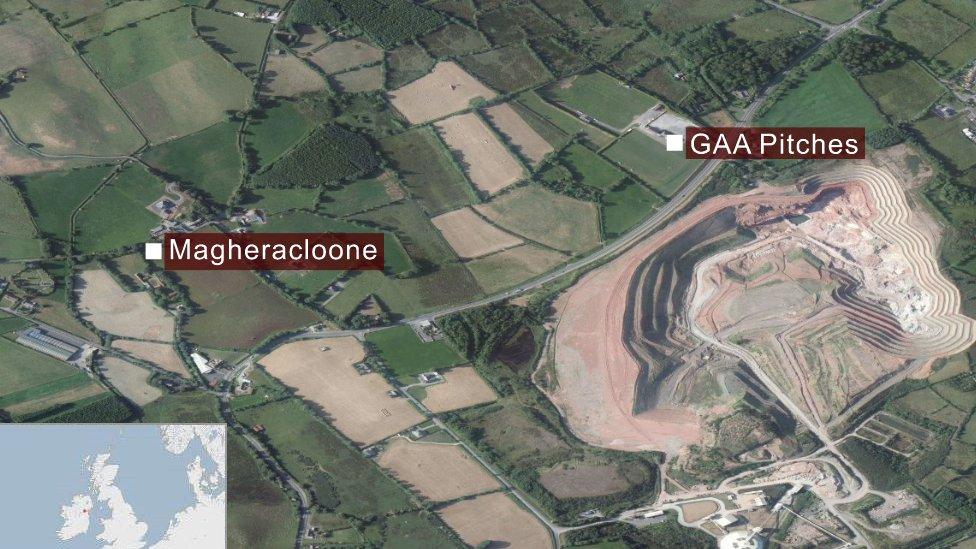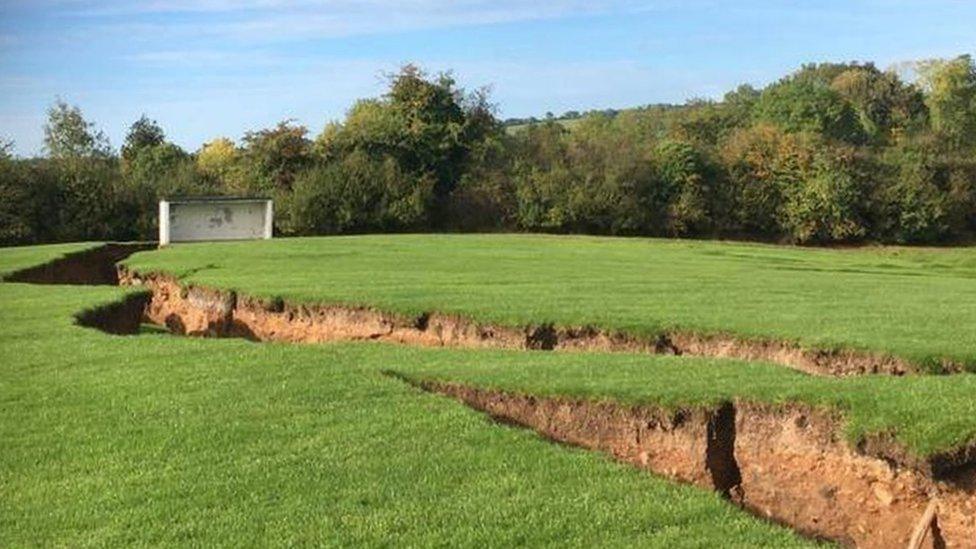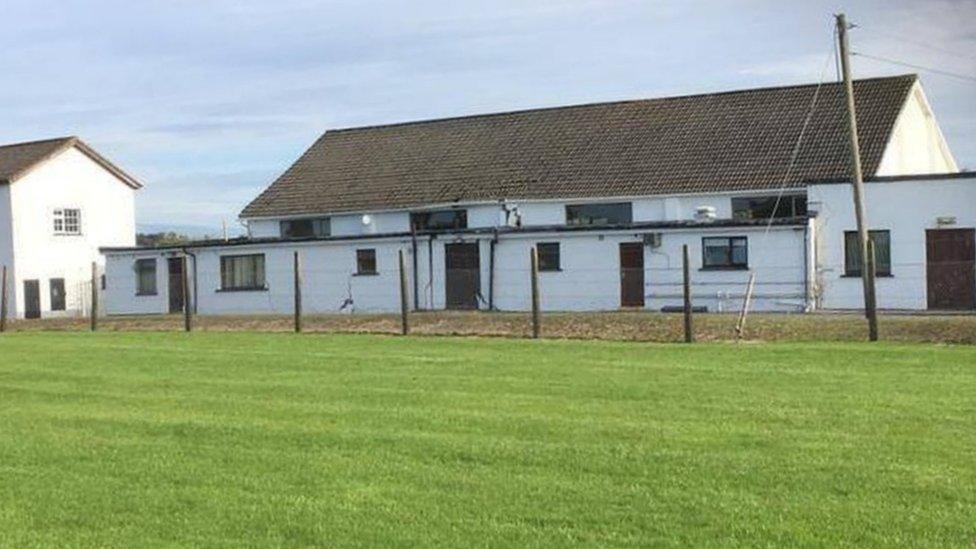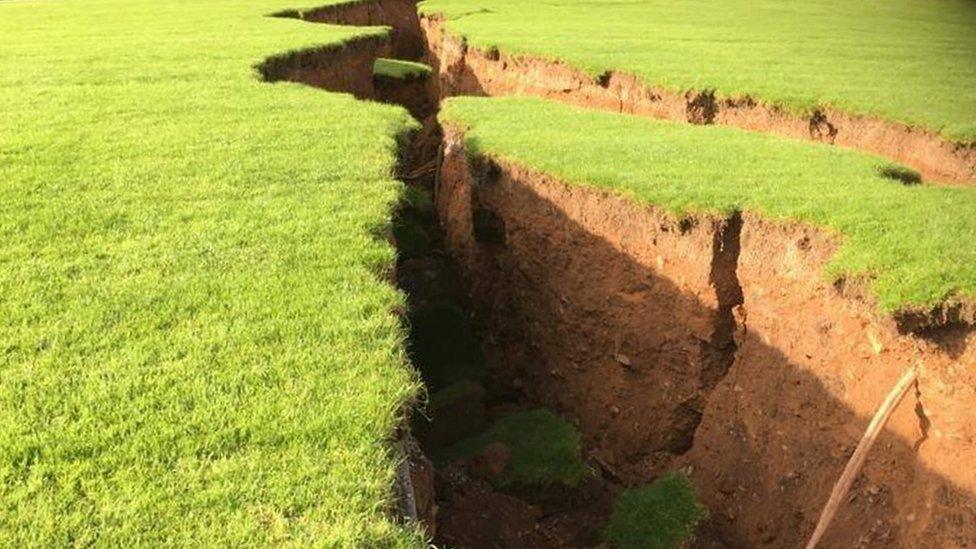Gaelic football club sinkholes 'caused by mine work'
- Published
Sinkholes close Gaelic football grounds
Sinkholes that ripped apart the grounds of a Gaelic football club were "probably" caused by recent work at a mine in the area.
Investigations have revealed the transportation and storage of water in a previously unused part of the mine caused pillars to collapse.
The sinkholes appeared on Sunday near Magheracloone Mitchells GAA club in County Monaghan.
The subsidence damaged the clubhouse and five nearby houses are affected.

Monaghan County Council said a number of roads will remain closed until mid-October.
The council also said the area in the vicinity of the mine remains closed to the public.
Gyproc, the mine's owner, said it could verify the area of subsidence known as the "disturbance zone" is approximately 120 metres square.
The company, which mines gypsum for the manufacture of plasterboard, added: "Within the 120 metre radius area there is the possibility of further subsidence as the grounds settle over the coming weeks.
"Gyproc is confident that this will be confined within this 120m radius.
"An area of investigation including five houses and two stretches of public road has been identified."
The company said it was working with families in the affected houses "to ensure they have as much help from Gyproc as possible".
A spokesperson said: "Gyproc has a long and respected mining history in the area for more than 80 years and operates to the highest mining standards."

No-one was injured when the land collapsed
'Non-runner'
On Tuesday, Magheracloone Mitchells GAA club's chairman Francis Jones said the complex in County Monaghan was "a non-runner".
"All our pitches have been affected and the buildings are cracked," he said told BBC News NI.
The chairman confirmed his club would have to seek an alternative training ground.

Magheracloone Mitchells' clubhouse and surrounding area have been closed off
What is a sinkhole?
Sinkholes form when rainwater comes into contact with a certain type of soft rock - such as chalk or limestone - and dissolves it.
Typically rainfall seeps through the soil, absorbing carbon dioxide and reacting with decaying vegetation. As a result, the water that reaches the soluble rock is acidic.
The acidic water causes the erosion of the soluble rock layers beneath the surface - eventually creating cavernous spaces.
The land above collapses into the cavity when it can no longer be supported.
Sinkholes can range in size enormously and there are warning signs in urban areas - such as doors and windows failing to close properly, or cracks appearing in the foundations of houses.
- Published25 September 2018

- Published2 October 2015
